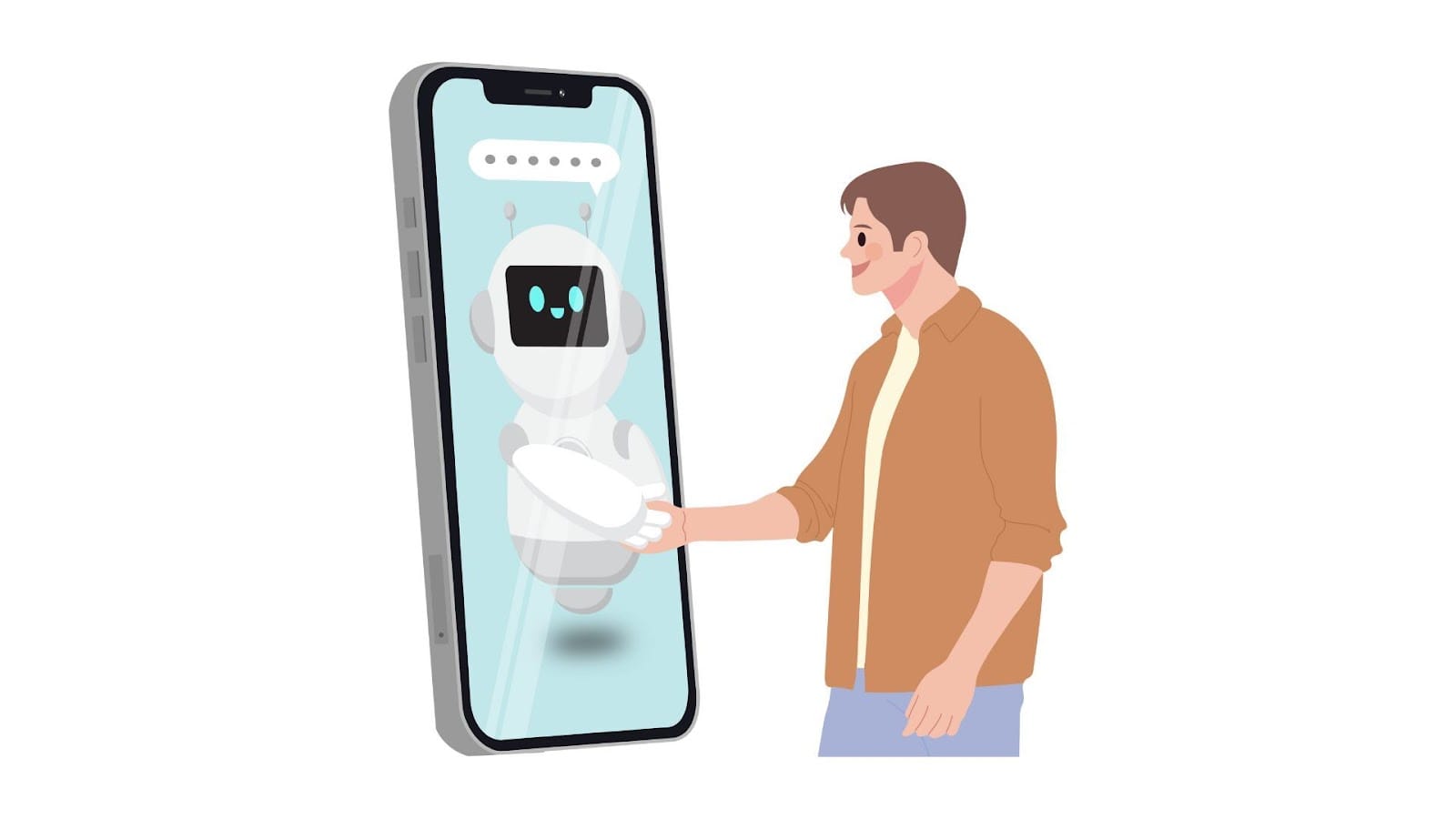AI SDRs vs Human SDRs: Which One is Better?
Unlock the future of sales with AI vs. Human SDRs! Explore how combining both can supercharge efficiency, conversions, and team success.

Can human SDRs keep up with the increasing demands of sales, or is AI the future of sales outreach? As businesses strive to improve efficiency and reduce costs, many are turning to AI to handle the heavy lifting of sales development.
A Gartner report predicts that by 2025, 75% of B2B sales conversations will be powered by AI. This highlights the growing role of technology in sales teams and raises an important question: Will AI SDRs replace human SDRs, or will they work side by side to drive success?
In this blog, we'll compare AI SDRs and human SDRs—looking at their strengths, weaknesses, and what this means for the future of sales.
Whether you're a business leader, sales manager, or simply curious about the future of sales technology, this comparison is crucial for understanding how sales teams will operate moving forward.
What is an AI SDR?
An AI SDR (Sales Development Representative) is a virtual assistant powered by artificial intelligence designed to automate and streamline the lead generation and outreach process. Unlike human SDRs who manually research prospects, make cold calls, and send personalized emails, an AI SDR uses algorithms and machine learning to perform similar tasks — but at a much faster rate and with greater consistency.
For example, Floworks' Alisha is an AI SDR that automatically sends personalized emails, follows up with prospects, and qualifies leads based on their responses. It doesn't get tired, doesn't forget to follow up, and can work around the clock — ensuring no lead is left behind.
AI SDRs are designed to handle repetitive and time-consuming tasks, allowing sales teams to focus on higher-value activities like nurturing relationships and closing deals. While they don't replace human SDRs entirely, they act as powerful assistants that can scale a business's outreach without hiring additional staff.
How exactly do AI SDR systems work in the sales process, and how effective are they?
How AI SDRs Work in the Sales Process
AI SDRs are integrated into the sales process to handle a wide range of tasks that traditionally fell to human SDRs. Here's how they work step-by-step to streamline and enhance the sales process:
Lead generation
AI SDRs can automatically gather and identify potential leads from various sources, including social media, websites, and third-party databases. They analyze key data points such as industry, company size, and buyer behavior to create a list of qualified prospects.
Personalized Outreach
Once the leads are identified, AI SDRs initiate outreach through personalized emails, texts, or other communication channels. AI SDRs use advanced algorithms to craft custom messages based on the prospect's behavior and previous interactions, ensuring that the outreach feels human-like and relevant.
Follow-up and Nurtuting
AI SDRs never miss a follow-up. They are programmed to automatically send reminders and follow-up emails at optimal times, ensuring no lead is missed. Suppose a lead shows interest but doesn't immediately convert. In that case, the AI SDR continues the nurturing process through timely, personalized messages that keep prospects engaged and move them down the sales funnel.
Lead Qualification
One of the most powerful aspects of AI SDRs is their ability to qualify leads. By analyzing a prospect's responses and behavior—such as opening emails, clicking on links, or answering questions—AI SDRs determine how likely a lead is to convert. This allows human SDRs to focus on high-potential leads, increasing overall sales productivity.
CRM Integration
AI SDRs integrate seamlessly with CRM systems like HubSpot or Salesforce. They automatically log interactions, update records, and ensure the CRM is always current. This eliminates the manual data entry that often leads to inaccuracies or missed opportunities.
Automated Meeting Scheduling
AI SDRs can also schedule meetings with qualified leads. Once a prospect is deemed ready, the AI SDR can automatically propose meeting times based on the lead’s and the sales rep's availability. This removes the need for back-and-forth emails or reliance on external scheduling tools.
To know how to boost your sales outreach using AI in 2025. Read: Maximizing Sales Outreach using AI Tools in 2025
If you're seeking ways to enhance lead qualification and follow-up efficiency, consider exploring how Alisha can streamline your process and free up your team's time.
But how do AI SDRs compare to traditional human SDRs? Let's take a closer look.
AI SDR vs Human SDR
When it comes to lead generation and sales outreach, both AI SDRs and human SDRs have their strengths. However, understanding the differences can help businesses make more informed decisions about how to utilize these resources best. Let’s compare the two in terms of key aspects of the sales process
Here’s a table summarizing the key differences between AI SDRs and Human SDRs:
1. Speed and Efficiency
AI SDRs: AI SDRs work non-stop, around the clock, processing vast amounts of data and engaging leads instantly. Unlike human SDRs, who need breaks, sleep, or weekends off, an AI SDR can simultaneously handle hundreds, if not thousands, of leads. This results in faster response times and a higher volume of outreach without sacrificing quality.
Human SDRs: Human SDRs can only manage a limited number of leads at a time and are bound by the constraints of working hours. While human SDRs can build relationships and personalize their outreach, they can only focus on a handful of prospects at any given time.
Winner: AI SDRs can work 24x7, unlike human SDRs, and can comparatively handle large numbers of leads.
2. Consistency
AI SDRs: AI SDRs excel at maintaining a consistent tone and approach across all communications. Since they operate based on predefined parameters and data, they never miss a follow-up, forget to send an email, or experience "off" days. Their outreach is always on point, helping sales teams keep a steady cadence.
Human SDRs: While valuable for building rapport and navigating complex conversations, human SDRs can struggle with consistency. Whether due to burnout, distractions, or simple human error, human SDRs may miss follow-ups or fail to reach out to every prospect on time.
Winner: AI SDR as their approach towards a lead will be consistent in communication and with the follow ups, which is crucial to keep leads engaged.
3. Personalization
AI SDRs: AI SDRs bring their form of personalization to the table. They can analyze vast amounts of data to generate highly personalized outreach. While AI SDRs can't replicate the emotional connection that humans can create, they can craft tailored messages that match the prospect’s specific pain points and needs, often leading to increased engagement.
Human SDRs: Human SDRs excel in relationship-building and adapting communication based on a deeper understanding of the prospect's context. They can adjust their approach during a conversation, read between the lines, and offer a personal touch that resonates emotionally.
Winner: Human SDRs as they can establish an emotional connection with prospects, which is essential in building trust.
4. Cost Efficiency
AI SDRs: AI SDRs provide significant cost savings, especially for small and medium-sized businesses. With an AI-powered SDR, businesses don’t need to hire, train, or manage additional sales staff. An AI SDR handles the repetitive tasks that typically require multiple human SDRs, making it a more affordable solution.
Human SDRs: In contrast, while invaluable for relationship-building and handling complex inquiries, human SDRs come with ongoing costs. This includes salaries, benefits, training, and management. As a result, human SDRs may be a less cost-effective solution for scaling sales efforts.
Winner: AI SDRs as they can automate tasks and reduce the need for extensive human resources.
5. Scalability
AI SDRs: Scaling with an AI SDR is straightforward. As business needs grow, AI SDRs can manage more leads and handle increased outreach without any additional hiring. This scalability ensures that the sales process remains smooth and efficient as the volume of leads grows.
Human SDRs: Scaling with human SDRs requires recruiting, onboarding, and training new staff, which can be time-consuming and expensive. It also means additional management overhead to ensure the new team members integrate effectively into the existing sales process.
Winner: AI SDRs as they can easily adapt to growing demand without the need for extensive training and recruitment process.
6. Complexity and Problem-Solving
AI SDRs: AI SDRs are limited to the information and patterns they've been trained on. They can't improvise or handle complex, open-ended conversations. While they can address common questions and provide consistent follow-ups, they are not equipped to engage in highly intricate discussions.
Human SDRs: Human SDRs shine when it comes to addressing complex, nuanced issues or engaging in deep problem-solving conversations. They can navigate challenging discussions, offer creative solutions, and engage in back-and-forth dialogue to understand the unique needs of each prospect.
Winner: Human SDRs as humans have the ability to handle complex conversation and resolving unique customer issues.
Let's see the benefits offered by both human and AI SDRs.
Both AI SDRs and human SDRs play critical roles in the sales process. AI SDRs offer unparalleled efficiency, consistency, and scalability, making them an excellent choice for automating repetitive tasks and handling large volumes of leads. However, human SDRs remain essential for building deep relationships, solving complex issues, and adding a personal touch to sales conversations.
Want to boost AI trust in sales? Read: AI SDR Sales: How to Build Trust in the Age of AI
Now that we’ve compared both sides, it’s time to discuss a sweet spot: the hybrid model. What if there's a way to get the best of both worlds—combining the speed and scalability of AI with the emotional intelligence and nuanced judgment of human SDRs?
The Hybrid Model: Combining AI and Human SDRs
Source: Conversion Logix
While AI SDRs bring remarkable efficiency and automation to the sales process, the real magic happens when you combine the strengths of both AI and human SDRs. Here's how the hybrid model works and why it's becoming increasingly popular:
- AI SDRs Automate Repetitive Tasks: AI handles routine tasks such as initial outreach, follow-up emails, and lead qualification, ensuring no lead is overlooked and freeing human SDRs for more strategic work.
- Human SDRs Handle High-Level Interactions: Humans focus on complex interactions like addressing objections, negotiating terms, and building deeper relationships, which are crucial for converting leads into sales.
- Increased Efficiency and Scalability: By automating routine tasks, AI allows human SDRs to focus on strategic activities, making the sales process more efficient and scalable without increasing headcount.
- Balancing Automation with Personalization: The hybrid model combines AI's efficiency with human personalization, ensuring timely and relevant communication while providing emotional intelligence for relationship-building.
- Better Lead Conversion and Higher ROI: Combining AI's speed with human insight improves lead engagement and conversion rates, enhancing sales productivity and offering a strong return on investment.
To learn about powerful lead generation tools for 2025. Read: Beginner's Guide to Online Lead Generation Tools and Techniques 2025
Conclusion
As sales teams continue to evolve, the debate between AI SDRs and human SDRs remains essential to understanding how best to drive efficiency and conversion. While AI SDRs bring unparalleled speed, scalability, and accuracy to the table, human SDRs still offer the relationship-building and adaptability that many sales processes require.
By combining the strengths of both—through the hybrid model—businesses can optimize their sales processes, reduce costs, and maximize their team’s productivity.
At Floworks, we understand the value of this balance. Alisha, our AI SDR, can automate routine tasks and ensure no lead is left behind, giving your sales team the bandwidth to focus on what truly matters: closing deals.
If you’re looking to enhance your sales outreach and boost your team’s efficiency, Floworks can be your best partner.
Book a demo today and take your sales process to the next level.
FAQs
How do AI SDRs handle complex sales scenarios compared to human SDRs?
AI SDRs excel at automating repetitive tasks and managing high volumes of leads. However, they may struggle with complex sales scenarios that require nuanced understanding, emotional intelligence, and adaptability. Human SDRs are better equipped to navigate these situations, building trust and rapport with prospects through personalized interactions.
Can AI SDRs fully replace human SDRs in the sales process?
While AI SDRs can automate many aspects of the sales process, they are not a complete replacement for human SDRs. The most effective sales strategies often involve a hybrid approach, where AI handles routine tasks, and human SDRs focus on complex, relationship-driven aspects of sales.
How do AI SDRs impact the overall sales team performance?
By automating time-consuming tasks, AI SDRs allow human sales teams to concentrate on high-value activities like closing deals and strategic planning. This collaboration can lead to improved efficiency, higher conversion rates, and a more streamlined sales process
How quickly can AI SDRs be integrated into an existing sales team?
AI SDRs can be integrated into an existing sales team relatively quickly, especially with modern sales automation platforms that offer easy integration with CRM systems. While initial setup and training may take time, the AI can handle routine tasks almost immediately, allowing human SDRs to focus on more strategic activities.


